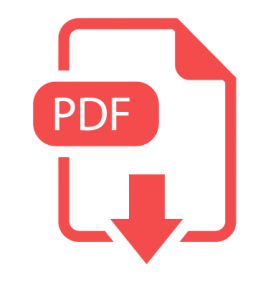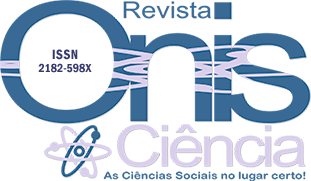E-LEARNING, B-LEARNING, M-LEARNING AND THE TECHNICAL AND PEDAGOGICAL ASPECTS ON THE NEW PLATFORM TRENDS AS MASSIVE OPEN ONLINE COURSES
Federal Institute of Education, Science and Technology of Amazonas, Manaus, Amazonas – Brasil
Ranniéry Mazzilly Silva de Souza University of the State of Amazonas, Manaus, Amazonas – Brasil
The dynamics of Information Communication Technology (ICT) expanded the scope of Education Science and, consequently the Educational Technology has reached various emerging areas such as: E-LEARNING, B-LEARNING, M-LEARNING. This article is part of research being conducted in the PhD Program in Science Education – Specialization in Educational Technology at the University of Minho (Braga-Portugal). The method used was the bibliographical research supported by systematic review of the literature (SRL) methodology in databases, whose research protocol was based on the adaptation of SRL methods [33]. E-learning is defined as a type of interactive learning, where learning content is available online and automatic feedback of student learning activities is assured. Online real-time communication may or may not be included, but the focus of e-learning resides more on the content of learning than on the communication between students and tutors [18]. This paper covers e-learning in its varied aspects. The terminology of the word e-learning is firstly discussed, as well as its respective definitions and concepts. The main cornerstones in the development of e-learning as a teaching method are presented, then extended to the areas of b-learning and m-learning. This section also describes the historical aspects and the generations which arose from Distance Education. Furthermore, the technical and pedagogical approaches to e-learning are related. A table is subsequently presented, displaying the advantages and challenges of the e-learning practice. Finally, it analyses the e-learning system, together with new platform trends, namely the Massive Open Online Courses (MOOC). The traditional and contemporary paradigms are antagonistic. For this reason they are in frank tension, the first virtual learning environment (VLE) that serve to support classroom courses or closed courses and are fully virtualized. And on the other hand, MOOC appear with the goal of extending these courses through the network, and are therefore open to all users who want to take the course. This remarkable change of paradigms are the major challenges and excel in both aspects of pedagogy, after all this situation reveals that the Human Computer Interface (HCI) is fulfilling its main objective which is to make more accessible interaction and easy to be used by all users for more heterogeneous than they are.
Keywords: e-learning, b-learning, m-learning, technical and pedagogical approaches, Massive Open Online Courses (MOOC).
ASPECTOS TÉCNICOS E PEDAGÓGICOS NAS NOVAS TENDÊNCIAS DA PLATAFORMA EM CURSOS ONLINE ABERTOS: E-LEARNING, B-LEARNING, M-LEARNING.
RESUMO: A dinâmica da Tecnologia da Informação e Comunicação (TIC) ampliou o escopo da Ciência da Educação e, consequentemente, a Tecnologia Educacional alcançou diversas áreas emergentes, como: E-APRENDIZAGEM, B-APRENDIZAGEM, M-APRENDIZAGEM. Este artigo é parte da pesquisa realizada no Programa de Doutorado em Ensino de Ciências – Especialização em Tecnologia Educacional da Universidade do Minho (Braga-Portugal). O método utilizado foi a pesquisa bibliográfica apoiada na revisão sistemática da metodologia da literatura (SRL) em bancos de dados, cujo protocolo de pesquisa foi baseado na adaptação dos métodos de SRL. A comunicação on-line em tempo real pode ou não ser incluída, mas o foco do e-learning reside mais no conteúdo da aprendizagem do que na comunicação entre alunos e tutores. Este artigo aborda o e-learning em seus diversos aspectos. A terminologia da palavra e-learning é discutida em primeiro lugar, bem como suas respectivas definições e conceitos. Os principais pilares do desenvolvimento do e-learning como método de ensino são apresentados e estendidos às áreas de b-learning e m-learning. Discorre ainda aspectos históricos e as gerações que surgiram da Educação a Distância, bem como, suas abordagens técnicas e pedagógicas correspondentes. As análises deste sistema de e-learning, juntamente com as novas tendências da plataforma, a saber, os Massive Open Online Courses (MOOC) nos sugere inferir que os paradigmas tradicionais e contemporâneos são antagônicos. Por esse motivo, eles estão em franca tensão, o primeiro ambiente virtual de aprendizagem (AVA) que serve para dar suporte a cursos em sala de aula ou cursos fechados e são totalmente virtualizados. Por outro lado, o MOOC aparece com o objetivo de estender esses cursos pela rede e, portanto, é aberto a todos os usuários que desejam fazer o curso. Essa notável mudança de paradigma é o maior desafio e se destaca nos dois aspectos da pedagogia, depois de toda essa situação revelar que a Interface Homem Computador (IHC) está cumprindo seu principal objetivo: tornar a interação mais acessível e fácil de ser usada por todos os usuários. por mais heterogêneo do que são.
Palavras-chave: e-learning, b-learning, m-learning, Abordagens técnica e pedagógica, MOOC.

